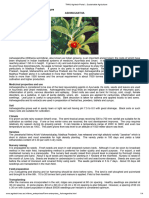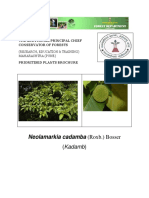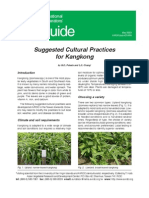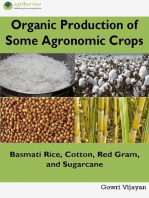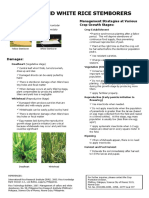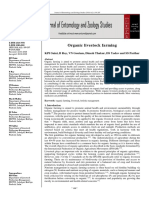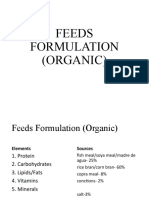0 ratings0% found this document useful (0 votes)
6 viewsGrow African Nightshade
Grow African Nightshade
Uploaded by
richardlaizer1Copyright:
© All Rights Reserved
Available Formats
Download as PDF, TXT or read online from Scribd
Grow African Nightshade
Grow African Nightshade
Uploaded by
richardlaizer10 ratings0% found this document useful (0 votes)
6 views2 pagesOriginal Title
Grow_African_nightshade
Copyright
© © All Rights Reserved
Available Formats
PDF, TXT or read online from Scribd
Share this document
Did you find this document useful?
Is this content inappropriate?
Copyright:
© All Rights Reserved
Available Formats
Download as PDF, TXT or read online from Scribd
Download as pdf or txt
0 ratings0% found this document useful (0 votes)
6 views2 pagesGrow African Nightshade
Grow African Nightshade
Uploaded by
richardlaizer1Copyright:
© All Rights Reserved
Available Formats
Download as PDF, TXT or read online from Scribd
Download as pdf or txt
You are on page 1of 2
The World Vegetable Center
n Introduction: Several species of African n Sowing time: Nightshade is not as susceptible
nightshade (mnavu in Kiswahili) are grown to cold temperatures as other African indigenous
for their edible leaves, including Solanum vegetables such as spider plant. It can be grown
americanum Solanum scabrum and Solamum throughout the year if water is available.
villosum. The leaves are highly nutritious and
there is a growing market for them in both n Nursery preparation: The nursery should be
rural towns and major cities. Bitter and small in a flat fertile area, near to a water source and
leaf types are preferred by adults in Kenya and free from shade if producing during the rainy
Tanzania. Big leafy types are generally sweeter season. However, shade during the dry season seeds should be covered with a thin layer of soil
and preferred by children. Only the yellow can be beneficial to prevent the bed from drying and watered. After emergence, thin densely
to orange-colored fruits of Solanum villosum out and young plants wilting. The land should be populated seedlings to 2-4 cm between plants.
are edible while those from other species are well prepared and mixed with cattle, chicken or Weeding should be done as soon as the weeds
poisonous. compost manure at a rate of 2-5 kg/m2. appear, especially when the plants are still
young.
n Transplanting and crop management:
About three weeks after sowing, harden
seedlings by slightly reducing the frequency
of watering. The seedlings for transplanting
should be ready in four to six weeks when
they have 4-7 true leaves. Land should be
well prepared and mixed with compost, cattle
or chicken manure at a rate of 2–5 kg/m2
depending on availability.
n Varieties: AVRDC-The World Vegetable
Center has selected and is promoting the big
leaf type of nightshade which is rather sweet as n Sowing and thinning: The small seeds should
compared to the narrow or medium leaf types, be mixed with sand at a ratio of 1:3 to make them
which are more bitter. Cultural tastes determine easier to sow evenly. Space seed about 1 cm apart
which type to grow. in rows that are 15-20 cm apart. After sowing, the
Use a plant spacing of 20 cm by 20 cm for n Seed production: Seed production usually
continuous leaf picking for home garden crops. takes about 4-6 months after transplanting or
A wider spacing of 50 X 50 cm gives a higher leaf thinning. Plant out seedlings for seed production
yield in long term commercial production plots more widely (50 X 50 cm) than those for leaf
and for seed production purposes. production (20-30 X 20-30 cm). Ripe fruits are
harvested and seed extracted from the pulp either
Weeding is particularly important during the hot
dry season when it should be done at least once
mechanically using a seed extractor or manually.
Extracted seed is fermented for 24 hours in water, How to Grow
every three weeks. washed then sun dried, packed and stored in a
n Harvesting and sale: Yields are increased
cool place until use. AFRICAN
by continuous picking of tender lateral stems
and leaves which stimulates the production of NIGHTSHADE
new shoots. Harvesting can continue for up to 5
months during the wet season and for 4 months
during the dry season. The prices for quality leaf Long-term production of
are highest in the dry season and vary from 50 to nutritious and tasty leaves
200 Tsh for a bundle of 50-100 g in Tanzania and
up to 15 Ksh for a bundle of 450-650g in Kenya.
n Cooking: Several recipes involving onion,
tomato, fresh milk, groundnut flour and cooking
oil have been developed by the World Vegetable
Center and are available as leaflets. The cooking
time does not exceed 15 minutes. Nightshade
leaves are rich in protein, fiber, calcium,
phosphorus, iron, and carotenoids.
Contacts:
AVRDC-The World Vegetable Center,
Regional Center for Africa
P.O Box 10, Duluti, Arusha, Tanzania
Tel: +255 27 2553093/2553102
Email: info-africa@worldveg.org
Website: www.avrdc.org
Supported by the Kilimo Trust and BMZ/GTZ
You might also like
- Coffee Production PhilippinesDocument3 pagesCoffee Production PhilippinesJennifer Legaspi100% (6)
- Apples - Botany, Production, and Uses (2004)Document2 pagesApples - Botany, Production, and Uses (2004)smb 09No ratings yet
- Agricultural Extension and CommunicationDocument173 pagesAgricultural Extension and CommunicationAlfredo Conde100% (1)
- Cabbage: Planting GuideDocument3 pagesCabbage: Planting Guidemashitiva67% (3)
- Pechay Production GuideDocument23 pagesPechay Production GuideMajorineNo ratings yet
- Tle 5 Periodical ExamDocument2 pagesTle 5 Periodical ExamVhia Hermitanio88% (16)
- How To Grow African EggplantDocument2 pagesHow To Grow African EggplantsebitwanenatashaNo ratings yet
- Rhodes Grass X Tozi FactsheetDocument3 pagesRhodes Grass X Tozi FactsheettajwalisultanNo ratings yet
- PineappleDocument8 pagesPineappleAltaf ShaikhNo ratings yet
- Cultivation of Sweet Potato Ipomea Batat PDFDocument2 pagesCultivation of Sweet Potato Ipomea Batat PDFIoana Johanna IancuNo ratings yet
- CowpeaDocument4 pagesCowpeaDBSKfangirlNo ratings yet
- Asparahus RacemosusDocument5 pagesAsparahus RacemosusRadio GorkhaNo ratings yet
- AmorphophallusDocument7 pagesAmorphophallussubhalaxmisubhu361No ratings yet
- CasuarinaDocument10 pagesCasuarinaravichan_2010No ratings yet
- French Bean 406Document9 pagesFrench Bean 406Siva KumarrNo ratings yet
- Dya20044 Chapter 3.3 TapiocaDocument42 pagesDya20044 Chapter 3.3 TapiocaEyka NadyraNo ratings yet
- Sandal_Nursery_TechniquesDocument4 pagesSandal_Nursery_TechniquesKareena ThaparNo ratings yet
- SARPAGANDHADocument27 pagesSARPAGANDHARamyaNo ratings yet
- lec2wDocument5 pageslec2wDeva Ganga SlideshareNo ratings yet
- Passion Fruit Farming: Yellow Passion Variety Purple Passion VarietyDocument7 pagesPassion Fruit Farming: Yellow Passion Variety Purple Passion VarietyShan Maya100% (1)
- Angelica Glauca Edgew.Document4 pagesAngelica Glauca Edgew.Maneesh BishtNo ratings yet
- Growing Green BeansDocument5 pagesGrowing Green BeansscotishgnomeNo ratings yet
- Cowpea CorrectDocument13 pagesCowpea CorrectomarmurjanatuNo ratings yet
- PomegranateDocument21 pagesPomegranateDr.Eswara Reddy Siddareddy50% (2)
- Capsicum Farming in Greenhouse PDFDocument5 pagesCapsicum Farming in Greenhouse PDFgunjan88No ratings yet
- Neem Cultivation-457Document9 pagesNeem Cultivation-457mandaremNo ratings yet
- French BeansDocument3 pagesFrench BeanssekarkkNo ratings yet
- Passion FruitDocument6 pagesPassion FruitSuman SinghNo ratings yet
- Cassia Sp.Document20 pagesCassia Sp.John PeterNo ratings yet
- CoffeDocument21 pagesCoffesakthivelNo ratings yet
- Phil Veg GrowingDocument86 pagesPhil Veg GrowingManny QuibinitNo ratings yet
- Sustainable AgricultureDocument4 pagesSustainable AgricultureSubhrajeet ChowdhuryNo ratings yet
- Neolamarkia Cadamba (Roxb.) Bosser: (Kadamb)Document5 pagesNeolamarkia Cadamba (Roxb.) Bosser: (Kadamb)Neil Patrick CartajenasNo ratings yet
- Sunnhemp Botanical Name: Crotolaria Juncea Family: Fabaceae (Leguminoseae) Chromosome Number: 2n 16Document3 pagesSunnhemp Botanical Name: Crotolaria Juncea Family: Fabaceae (Leguminoseae) Chromosome Number: 2n 16Ganpat Lal SharmaNo ratings yet
- Dovyalis Caffra IntDocument2 pagesDovyalis Caffra IntRaymond KatabaziNo ratings yet
- Organic Kiwifruit ProductionDocument2 pagesOrganic Kiwifruit Productionaryan jainNo ratings yet
- Velvetbean Mucuna Pruriens Production in Southern ... )Document6 pagesVelvetbean Mucuna Pruriens Production in Southern ... )Solomon MbeweNo ratings yet
- Papaya Cultivation 056Document17 pagesPapaya Cultivation 056Sudhangsu Bhaumik100% (1)
- Compilation of Information On Growing Ampalaya (Bitter Gourd) in The PhilippinesDocument38 pagesCompilation of Information On Growing Ampalaya (Bitter Gourd) in The PhilippinesPeter Rice86% (22)
- How To Grow Cowpeas (Vigna Unguiculata) : Seed Savers Exchange © 2017Document2 pagesHow To Grow Cowpeas (Vigna Unguiculata) : Seed Savers Exchange © 2017Geros dienosNo ratings yet
- Managu ProductionDocument21 pagesManagu ProductionSamuel Kyalo MweuNo ratings yet
- CultivatingDocument7 pagesCultivatingDeep & Minimal Tech House Music UnionHouseMusicNo ratings yet
- 5-Suggested Cultural PracticesDocument4 pages5-Suggested Cultural PracticesMuadezerk Kun100% (1)
- Crop Descriptio N: CRSC 2 (AB-5L)Document7 pagesCrop Descriptio N: CRSC 2 (AB-5L)Fatima Pontiga LucidoNo ratings yet
- Terminalia Arjuna Wt. and Arn.Document4 pagesTerminalia Arjuna Wt. and Arn.yagir35733No ratings yet
- Moringa Cultivation and Its UsesDocument16 pagesMoringa Cultivation and Its UsesFarhat Durrani100% (1)
- Discuss The sci-WPS OfficeDocument6 pagesDiscuss The sci-WPS Officeleonard tonuiNo ratings yet
- Shatavari EnglishDocument8 pagesShatavari Englishmudasir109No ratings yet
- TomatoDocument9 pagesTomatoqvc.lab87No ratings yet
- Pterocarpus Marsupium Roxb.Document4 pagesPterocarpus Marsupium Roxb.Settipalli Ram SuryaNo ratings yet
- Elephant Foot Yam: A Commercial Crop For Orissa: M. Nedunchezhiyan Abhinav Saurabh & Nirakar RanasinghDocument2 pagesElephant Foot Yam: A Commercial Crop For Orissa: M. Nedunchezhiyan Abhinav Saurabh & Nirakar RanasinghSRINIVASA RAONo ratings yet
- Banana Production Techniques-EswarDocument65 pagesBanana Production Techniques-EswarDr.Eswara Reddy Siddareddy100% (1)
- French Bean 020148Document6 pagesFrench Bean 020148Uday ShahNo ratings yet
- Minor VegetablesDocument11 pagesMinor VegetablesMonikagaireNo ratings yet
- Lab Activity Propagation of Selected Tropical Fruits and Plantation Crops1Document11 pagesLab Activity Propagation of Selected Tropical Fruits and Plantation Crops1Jevelyn Mendoza Farro100% (2)
- Safed MusliDocument6 pagesSafed MusliChaitanya KumarNo ratings yet
- Lab Activity Propagation of Selected Tropical Fruits and Plantation CropsDocument10 pagesLab Activity Propagation of Selected Tropical Fruits and Plantation CropsJevelyn Mendoza FarroNo ratings yet
- Rubia Cordifolia Linn.Document4 pagesRubia Cordifolia Linn.majiamal99No ratings yet
- AonlaDocument4 pagesAonlawasteid092No ratings yet
- Stemborer Fact SheetDocument1 pageStemborer Fact SheetYmarinaNo ratings yet
- Organic Livestock Farming: KPS Saini, B Roy, VN Goutam, Dinesh Thakur, DS Yadav and SS PariharDocument9 pagesOrganic Livestock Farming: KPS Saini, B Roy, VN Goutam, Dinesh Thakur, DS Yadav and SS PariharAjayNo ratings yet
- Strawberry Culture in VitroDocument12 pagesStrawberry Culture in VitroRizen Lee MandatiNo ratings yet
- Kavach FungicideDocument3 pagesKavach FungicideViji ThulasiramanNo ratings yet
- Plants NotesDocument3 pagesPlants NotesnsNo ratings yet
- TLE 6 - Week5Document6 pagesTLE 6 - Week5Luis SalengaNo ratings yet
- Dairy SheepDocument16 pagesDairy SheepsatrianasajaNo ratings yet
- Conserve SoilDocument10 pagesConserve SoilMagongcar hadjialiNo ratings yet
- Creating A Garden Designs For Every Kind of GardenDocument104 pagesCreating A Garden Designs For Every Kind of GardenStanciuMariana100% (3)
- 2021 - UPDATED Seed Testing (Ms. Elalin)Document89 pages2021 - UPDATED Seed Testing (Ms. Elalin)Krizia Daleene M. CorderoNo ratings yet
- M.A Geography DUDocument3 pagesM.A Geography DUBenjamin L SaitluangaNo ratings yet
- ApicultureDocument4 pagesApicultureJoseph Ndungu100% (1)
- Organic Is Life. Knowledge For Tomorrow 2011 Korea PDFDocument384 pagesOrganic Is Life. Knowledge For Tomorrow 2011 Korea PDFIuri AmazonasNo ratings yet
- Chili Proliga - IOPDocument14 pagesChili Proliga - IOPGigi BiazNo ratings yet
- Important!Document72 pagesImportant!Erika Ruth LabisNo ratings yet
- Annual Report RGVN 2020-21Document78 pagesAnnual Report RGVN 2020-21AMRIT ANANDNo ratings yet
- Zmeurasimureinsolarhightunnelsrasp PDFDocument29 pagesZmeurasimureinsolarhightunnelsrasp PDF19crystiNo ratings yet
- Moa With Lgu Gujinobatan - MswisaDocument5 pagesMoa With Lgu Gujinobatan - MswisaDivz RivaNo ratings yet
- Flying Apple DecemberDocument13 pagesFlying Apple DecemberJasonNo ratings yet
- Egyptian Regulation For MRL On - in Food Decision 6-2021Document1,455 pagesEgyptian Regulation For MRL On - in Food Decision 6-2021Omar IbrahimNo ratings yet
- Lishabora Hydroponics: Agriculture To End PovertyDocument11 pagesLishabora Hydroponics: Agriculture To End PovertyAlosious Okiror OukeNo ratings yet
- Propagation GuideDocument52 pagesPropagation GuideWinnie ChanNo ratings yet
- Area Production Productivity of Horticulture CropDocument4 pagesArea Production Productivity of Horticulture CropBhushan GosaviNo ratings yet
- A. Pengertian System Tanam GandaDocument16 pagesA. Pengertian System Tanam GandaFriska Lia AgustinNo ratings yet
- Smart-Farming in AgricultureDocument9 pagesSmart-Farming in Agriculturesharvari patilNo ratings yet
- Spinach FarmingDocument2 pagesSpinach FarmingBlazeNo ratings yet
- Feeds Formulation (Organic)Document13 pagesFeeds Formulation (Organic)Mark Victor Gaturian NalamNo ratings yet































